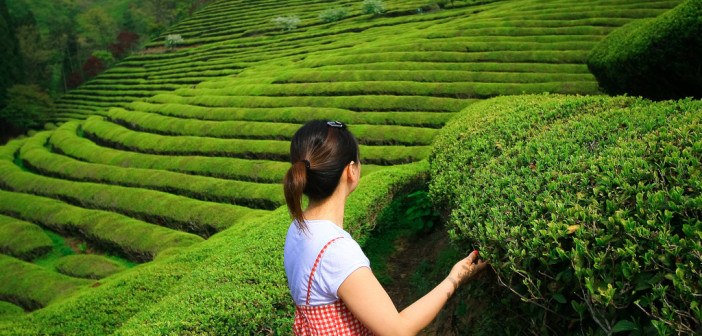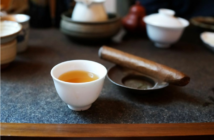There’s a story behind each of the leaves unfurling in your cup of green tea. Long before they became nourishment for your body and soul, each was thoughtfully cultivated, harvested and processed to create an amazing tea experience
What is Green Tea?
Green tea is made from the tender top two leaves and shoots of the tea bush, Camellia sinensis. Unlike most other types of tea, however, the leaves are prevented from oxidizing. The lack of oxidation is responsible for much of the distinctive taste, aroma, appearance and health benefits of green tea. Most green tea is produced in China and Japan.
How Green Tea is Made
Although each manufacturer has their own unique method of processing the leaves, there are three basic steps involved in producing green tea:
Heating: Newly plucked leaves are quickly heated to prevent oxidation. Oxidation is the chemical reaction that takes place when leaves are exposed to the oxygen in the air. Halting oxidation preserves the fresh leaf taste, color and high antioxidant content of the leaves. The leaves are heated either by steaming or pan firing.
Japan Green Teas– the leaves are steam-dried to preserve the color and grassy flavor
Chinese Green Teas– the leaves are pan fired for an earthy, roasted flavor
Rolling: Leaves are rolled to make a tight shape. Rolling breaks some of the leaf tissue- allowing leaves to release more of their essential oils in brewing. The most expensive green teas are hand-rolled.
Drying: Leaves are often dried several times during production. By manipulating the method, time, and temperature, producers can create a wide variety of flavor profiles.
One Leaf- Many Flavors
The final flavor profile, aroma and color of a green tea is dependent on many factors:
- Processes used to heat, shape, roll and dry the leaves
- Terroir (a combination of environmental factors where the plant is grown such as soil, climate, water and air)
- Organically grown or chemically treated plants
- The cultivation of the plants and which leaves are used
note that this article was previously published on May 11th, 2015




